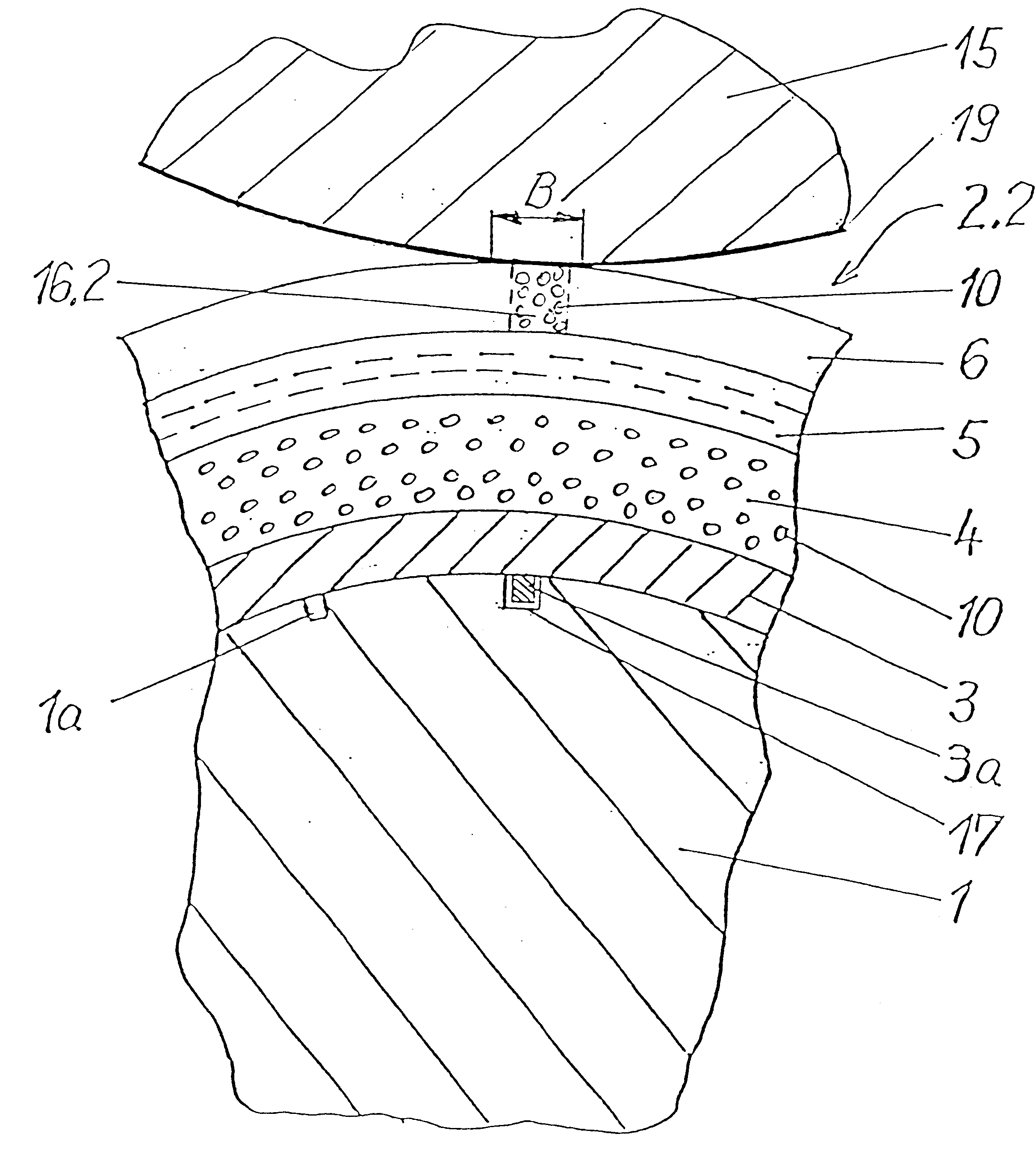Rubber cylinder sleeve, especially for web-fed rotary offset printing machines
a cylinder and cylinder technology, applied in the field of rubber sleeves, can solve the problems of high production cost, high production cost, and the need for continuous middle and lower layers of the same, and achieve the effect of reducing production costs, reducing production costs, and improving production efficiency
- Summary
- Abstract
- Description
- Claims
- Application Information
AI Technical Summary
Benefits of technology
Problems solved by technology
Method used
Image
Examples
Embodiment Construction
In FIG. 1, the transfer cylinder 1 (rubber blanket cylinder) has openings or nozzles 1a provided at its surface. The transfer cylinder sleeve 2 (rubber blanket sleeve) applied in the above-described manner has, as was explained previously, a metal sleeve 3 which can preferably be expanded by means of air and on which a compressible layer 4 is vulcanized or adhesively bonded. Provided on the compressible layer 4 is a layer of a non-expandable material 5, preferably a hard elastomer layer with short fibres, which are not specifically designated. Provided on the non-expandable layer 5 is a covering layer 6, for example one made of a resilient material, with which printing can be carried out by the offset printing process.
According to the invention, the carrier sleeve 3 used is preferably a metal sleeve, for example one of steel, which can be expanded by means of air and which has a joint location 7. This joint location 7 can be a welded seam which is preferably formed by welding togeth...
PUM
 Login to View More
Login to View More Abstract
Description
Claims
Application Information
 Login to View More
Login to View More - R&D
- Intellectual Property
- Life Sciences
- Materials
- Tech Scout
- Unparalleled Data Quality
- Higher Quality Content
- 60% Fewer Hallucinations
Browse by: Latest US Patents, China's latest patents, Technical Efficacy Thesaurus, Application Domain, Technology Topic, Popular Technical Reports.
© 2025 PatSnap. All rights reserved.Legal|Privacy policy|Modern Slavery Act Transparency Statement|Sitemap|About US| Contact US: help@patsnap.com



